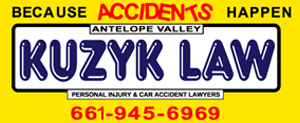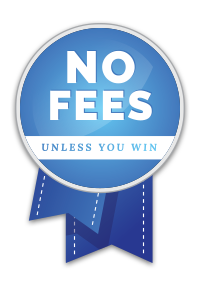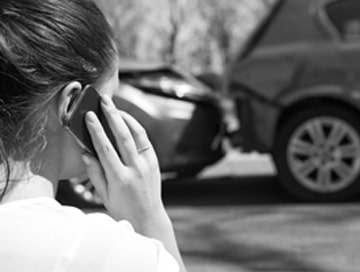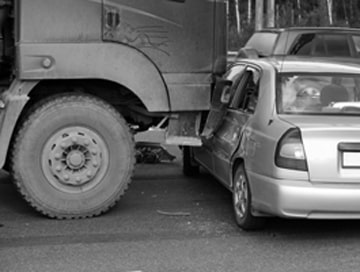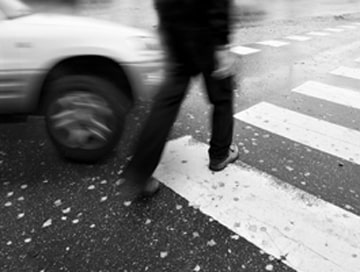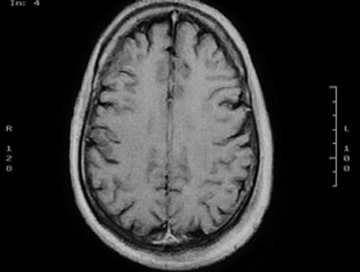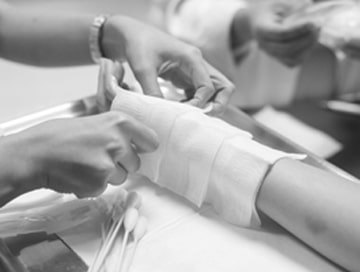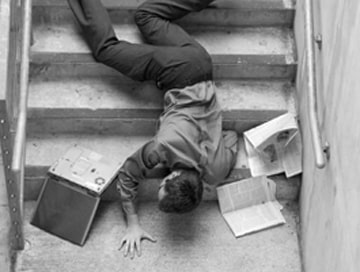Highway 99 and Highway 41 in Fresno present unique dangers for motorcyclists, including heavy truck traffic, sudden speed changes, construction zones, weather hazards like Tule fog, and complex interchange areas that create high-risk collision scenarios.
These highways combine agricultural transport routes with urban congestion, creating conditions where motorcycles face threats from fallen cargo, wind buffeting from large trucks, poor road surfaces, and drivers making unpredictable lane changes in merge areas.
If you’ve been injured in a motorcycle accident on these highways, understanding the specific hazards and your legal rights becomes crucial for protecting your recovery and financial future. Insurance companies often attempt to unfairly blame motorcyclists, even when dangerous road conditions or the negligence of other drivers contributed to the crash.
We are here to help you fight back. We will explain the most dangerous areas and conditions on Highway 99 and Highway 41, how fault works in motorcycle accidents, what evidence you need to preserve, and the legal deadlines that affect your ability to seek compensation through a Fresno motorcycle accident attorney.
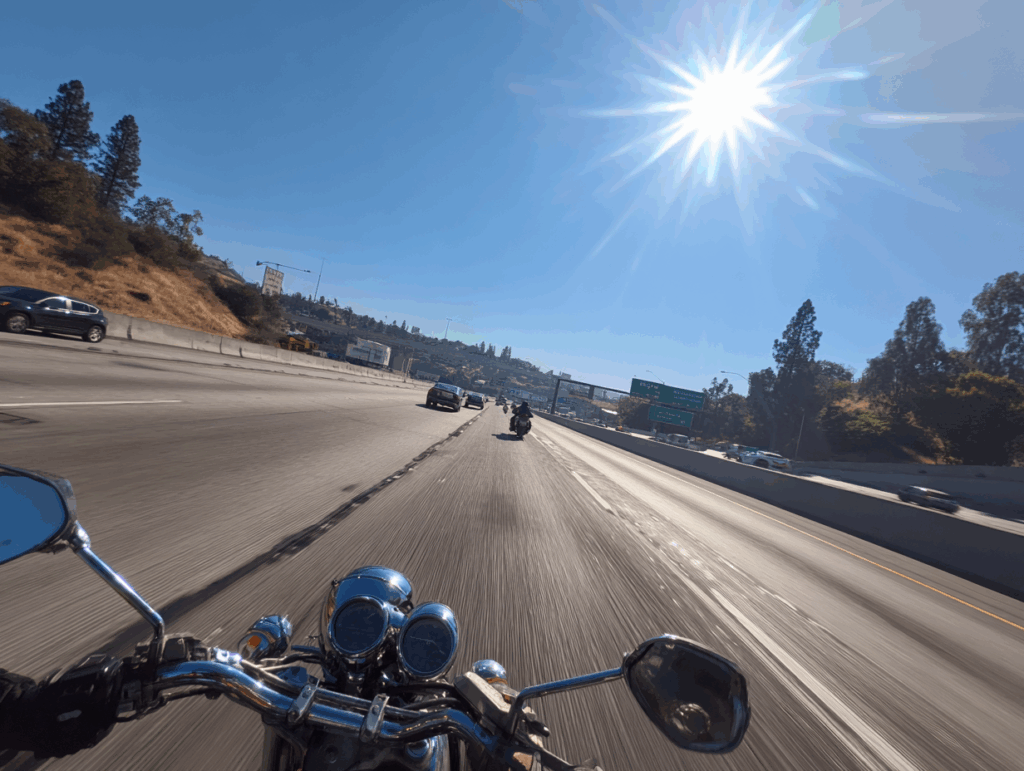
Why Highway 99 and Highway 41 Are Dangerous for Motorcyclists
Highways 99 and 41 are known to create some of the most hazardous riding conditions in Central California. These highways combine high speeds with unpredictable traffic patterns, posing a serious risk to motorcyclists.
Highway 99 serves as the main agricultural transport route through the Central Valley. This means you’ll encounter heavy truck traffic, fallen cargo, and road surfaces damaged by the constant use of commercial vehicles.
Highway 41 cuts through Fresno’s urban core with complex interchanges and congested merge areas. The combination of distracted city drivers and high-speed highway traffic creates a perfect storm for motorcycle accidents.
Both highways share common hazards that make riding especially dangerous:
Speed differentials:
Traffic can drop abruptly from over 70 mph to complete stops due to speed differentials.
Short merge lanes:
Drivers enter at unsafe speeds, creating collision risks
Surface hazards:
Expansion joints, grooved pavement, and agricultural debris
Visibility problems:
Tule fog in winter and dust storms in summer
Speed Changes and Weaving Traffic
Stop-and-go traffic creates hazardous weaving patterns as frustrated drivers attempt to maintain their speed. Motorcycles are much harder to see during these sudden lane changes, especially when distracted driving involves phones or navigation systems.
The 99/180 interchange area is particularly hazardous because multiple lanes of traffic must merge over a short distance. Drivers often make last-second decisions that put motorcyclists directly in harm’s way.
You need to maintain extra following distance in these areas and position yourself where other drivers can see you. Avoid riding in blind spots during periods of heavy traffic.
Construction Zones Create New Dangers
Caltrans construction projects narrow lanes and create concrete barrier walls that eliminate your escape routes. These K-rail barriers leave no room for error if another vehicle drifts into your lane.
Temporary lane markings can be confusing, especially at night when reflective paint may not be clearly visible. Construction zones also create uneven pavement transitions that can upset your motorcycle’s balance.
Be cautious of loose gravel, dirt, and steel plates used to cover utility work. These materials can cause your tires to lose traction instantly, leading to a crash.
Road Surface Problems
Bridge expansion joints are metal strips between concrete sections that can grab your front wheel. Grooved pavement has channels cut for water drainage that can make your motorcycle feel unstable.
Botts’ Dots are the raised plastic markers used to define lanes. While they help car drivers stay in their lanes, they can cause your motorcycle to wobble if you hit them at the wrong angle.
The safest way to cross these hazards is to maintain a steady throttle and avoid sudden steering inputs. Never brake or accelerate aggressively while crossing expansion joints or grooved pavement.
Highway 99 Motorcycle Hazards
Highway 99’s role as California’s primary agricultural highway creates specific dangers that are not found on other roads. Heavy truck traffic and agricultural transport create hazards that can appear without warning.
Understanding these specific risks helps you ride more defensively and avoid crashes that could seriously injure or kill you.
Truck Blind Spots and Wind Effects
Large commercial trucks have significant blind spots in front, behind, and along both sides that can hide motorcycles. These blind spots are large and can hide motorcycles from the truck operator’s view.
Wind buffeting happens when you pass a large truck and get hit by powerful air currents. These wind gusts can push your motorcycle into another lane or cause it to veer completely off the road.
Central Valley crosswinds exacerbate this problem, particularly on elevated highway sections. You need to grip the handlebars firmly and lean into crosswinds when passing trucks.
Cargo and Tire Debris
Unsecured loads from agricultural trucks regularly fall onto Highway 99. You might encounter anything from loose produce to farming equipment that has shifted during transport.
Blown truck tires create another serious hazard because the steel-belted treads can wrap around your wheels or cause you to crash. These tire pieces are often difficult to see until you’re right on top of them.
If you crash due to fallen cargo or tire debris, try to identify the truck it came from, if you can do so safely. Getting the company name and truck number helps establish liability for your injuries.
Pavement Defects
“Tar snakes” are the black sealant strips used to fill cracks in asphalt. In Fresno’s summer heat, these strips become soft and slippery, creating traction problems, especially in turns.
Highway 99 also suffers from deep potholes and rutting caused by constant heavy truck traffic. The outside edges of lanes often have the worst damage because trucks avoid the center lanes.
These defects can cause you to lose control, especially if you hit them while leaning into a turn. Taking photos of road defects after a crash helps preserve evidence for your injury claim.
Highway 41 Motorcycle Hazards
Highway 41 presents different but equally dangerous conditions as it passes through Fresno’s urban areas. The combination of city driving behaviors and highway speeds creates unique risks for motorcyclists.
Complex interchange systems require multiple lanes of traffic to cross each other in a short distance. Drivers focused on navigation often fail to check for motorcycles before changing lanes.
Dangerous Interchange Areas
The Highway 41 interchanges with Highway 180 and Highway 99 create some of the most dangerous riding conditions in Fresno. Multiple lanes of traffic must weave across each other to reach their desired exits.
Drivers in these areas are often confused about which lane they need and make sudden, unexpected lane changes. GPS navigation systems can exacerbate this issue by providing last-minute directions.
You should increase your following distance and wear high-visibility gear when riding through these interchange areas. Staying in a defensive lane position helps prevent you from getting trapped between merging vehicles.
Problematic On-Ramps and Off-Ramps
Major cross-streets, such as Bullard, Shaw, and Herndon Avenue, have notoriously short acceleration lanes. Drivers entering the highway often cannot reach safe merging speeds before running out of space.
This creates dangerous speed differentials between fast-moving highway traffic and much slower merging vehicles. Motorcycles can easily rear-end these slow-moving vehicles.
Off-ramps create similar problems when drivers realize they’re about to miss their exit and brake suddenly. It’s often safer to avoid the right lane entirely near these busy interchanges.
Weather Hazards Affecting Fresno Highways
Central Valley weather creates unique hazards for motorcyclists that drivers from other areas might not expect. Tule fog is the most dangerous, but summer heat and crosswinds also pose serious risks.
Understanding seasonal weather patterns helps you prepare for hazardous conditions and avoid crashes that could result in serious injury.
Tule Fog Dangers
Tule fog is dense ground fog that forms in the Central Valley during the winter months. Tule fog can significantly reduce visibility and can develop rapidly, creating hazardous conditions when combined with drunk driving.
Tule fog typically occurs from November through March, especially during early morning hours. It often leads to massive chain-reaction crashes involving dozens of vehicles.
The fog forms in low-lying areas first, then spreads across the highways. You might be riding in clear conditions one moment and suddenly find yourself in zero visibility.
Summer Heat and Road Conditions
Fresno’s extreme summer heat causes oil and other fluids to rise from the pavement surface. The first rain after a long dry spell creates an incredibly slick film on the roadway.
Hot pavement can reduce tire traction, so ride with extra caution. Fresno motorcycle accident attorney
Sun glare during morning and evening commutes can temporarily blind both you and other drivers. Clean your face shield regularly and consider polarized sunglasses for better visibility.
Crosswind Problems
Open agricultural areas around Highways 99 and 41 create wind tunnel effects that can push your motorcycle off course. Bridge overpasses and elevated highway sections amplify these crosswinds.
Lighter motorcycles are more susceptible to being pushed around by crosswinds. You need to maintain a firm grip on the handlebars and lean into strong crosswinds.
Sudden wind gusts can occur when passing large trucks or exiting wind-protected areas. Be prepared to make steering corrections to maintain your lane position.
Understanding Fault in Motorcycle Crashes
California uses a “pure comparative negligence” system to determine fault in motorcycle accidents. This means you can still recover money for your injuries even if you’re partially at fault for the crash.
For example, if you’re found 20% at fault for speeding when you hit road debris, you can still recover 80% of your total damages. Insurance companies will attempt to shift as much blame as possible onto you to minimize their payout.
Understanding how fault works helps you protect your rights and avoid saying things that could hurt your claim later.
Common Insurance Company Tactics
Insurance companies are highly motivated to minimize the amount they pay out on a claim. To achieve this, they use several aggressive strategies designed to increase your percentage of fault and drastically reduce their final settlement offer.
Blaming the Rider’s Speed
Adjusters will often argue that you were traveling at an excessive speed, even if no concrete evidence or police findings to support this claim. Their goal is to suggest that your speed, not the driver’s negligence, was the primary cause of the accident.
Questioning Lane Position
The insurance company may attempt to prove you were not where you should have been, alleging that your lane position was illegal or unreasonable. This tactic tries to shift the burden of liability onto the motorcyclist for being “in the wrong place.”
Attacking Safety Gear
In a highly controversial move, they may argue your injuries would have been less severe if you had been wearing different or “better” protective gear than what you had on at the time of the crash. This is an attempt to reduce the value of your non-economic damages.
Misrepresenting Conditions
Adjusters will often attempt to downplay the role of weather or road hazards that contributed to the crash. They want to focus only on the actions of the drivers and ignore environmental factors, like poor road maintenance or visibility, that might point the fault away from their insured driver.
Evidence You Need After a Highway Crash
Evidence disappears quickly on busy highways like 99 and 41. You need to start preserving evidence immediately, while still prioritizing your medical needs.
The evidence you collect in the first hours after your crash often determines whether you recover fair compensation or get stuck with massive medical bills.
Scene Documentation
Take photos of everything you can safely document at the crash scene. Include wide shots showing the overall area and close-up images of specific hazards or damage.
Return to photograph the scene in similar lighting conditions if possible. Weather and time of day can significantly affect visibility and contribute to crashes.
Video and Electronic Evidence
Look for potential video sources that captured your crash or the hazard that caused it. Some sources routinely delete footage after a short period of time. Hence, you need to act quickly to preserve it, particularly in hit and run cases where identifying the fleeing driver depends on video evidence.
An attorney can send preservation letters requiring these parties to save the footage before it’s automatically deleted.
Witness Information
Independent witnesses who saw your crash or the hazard that preceded it can provide crucial testimony. Commercial truck drivers often make excellent witnesses because of their elevated viewing position.
Obtain contact information from anyone who stopped to help or witnessed the incident. Ask them to describe what they observed and whether they’re willing to provide a written statement later.
Police reports aren’t final determinations of fault, but they can contain important details about road conditions and witness statements that support your claim.
Critical Deadlines for Your Claim
California law imposes strict deadlines for filing injury lawsuits that can eliminate your right to compensation forever. Missing these deadlines by even one day can destroy an otherwise strong case. Understanding these time limits helps ensure you don’t lose your legal rights while focusing on your medical recovery.
Two-Year Personal Injury Deadline
California Code of Civil Procedure Section 335.1 gives you two years from your accident date to file a personal injury lawsuit. This deadline applies to most motorcycle accident cases seeking compensation for your injuries and related losses.
The two-year clock starts ticking on the day you were injured. While rare exceptions exist, it is dangerous to rely on them. Furthermore, evidence disappears and witness memories fade quickly, so earlier action usually leads to better outcomes.
Six-Month Government Claim Requirement
If your crash involved a dangerous condition on public property, you must meet a much shorter deadline: file a formal administrative claim within six months.
This requirement applies to crashes involving road defects, such as potholes or broken pavement, missing or defective traffic control devices, and inadequate highway maintenance or design. An attorney is essential to determine whether your case requires a government claim and to file it properly within this strict deadline.
Common Motorcycle Crash Injuries
Highway-speed motorcycle crashes cause more severe injuries than typical city street accidents and tragically can result in wrongful death. Even with protective gear, you face significant trauma when thrown from your motorcycle at high speeds.
Understanding common injury types helps you get proper medical treatment and document the full extent of your damages for your legal claim.
Lower Body Injuries
Your legs and feet are highly vulnerable, frequently taking the initial impact or getting trapped under the bike.
These devastating injuries often include tibia and fibula fractures (usually requiring plates and screws), severe knee ligament tears, complex ankle and foot fractures that seriously affect mobility, and hip fractures that may necessitate joint replacement.
Such profound lower extremity trauma frequently results in months of lost work or permanently reduced earning capacity.
Head and Brain Injuries
Even with a helmet, a high-speed impact can cause the brain to shift within the skull, leading to a Traumatic Brain Injury (TBI).
Crucially, TBI symptoms may not appear until days or weeks after the crash; these can include memory and concentration problems, personality changes, balance issues, persistent headaches, and sensitivity to light.
Immediate medical evaluation is essential after any head impact, even if you initially feel fine, to document and treat this hidden damage.
Spinal Cord Damage
Highway crashes can severely injure your spine by herniating discs, fracturing vertebrae, or causing direct spinal cord damage.
These critical injuries may result in permanent numbness, weakness, or paralysis below the site of trauma. Spinal injuries demand immediate specialist evaluation, as delaying care can dramatically worsen these injuries and reduce your already fragile chances of recovery.
Road Rash and Scarring
Road rash occurs when your skin slides across the pavement at high velocity. At highway speeds, this often causes third-degree road rash requiring intensive medical treatment, including skin grafts and multiple surgeries.
Severe road rash carries serious infection risks and frequently results in permanent scarring and disfigurement, the full impact of which must be thoroughly documented for your compensation claim.
Contact Kuzyk Law Personal Injury & Car Accident Lawyers Today
If you’ve been injured in a motorcycle crash on Highway 99 or Highway 41, you need experienced legal representation that understands these dangerous highways.
Our Fresno motorcycle accident attorneys have decades of experience fighting for the rights of injured riders.
We are familiar with the specific hazards these highways present and how to demonstrate that dangerous conditions contributed to your crash. Our team handles all the legal complexities, allowing you to focus on your medical recovery and getting your life back together.
Kuzyk Law Personal Injury & Car Accident Lawyers operates on a contingency fee basis, meaning you pay nothing unless we successfully resolve your case. We cover all costs associated with investigation, expert witnesses, and litigation, so financial concerns should not prevent you from obtaining justice.
Contact us today for a free consultation to discuss your motorcycle accident case and learn how we can help you recover the compensation you deserve.
